All babies are cute, and baby guinea pigs are high up in all the cuteness and adorableness scales you could think of. They are tender and shy at first, but soon grow up to be the chatty and energetic guinea pig grown-ups that we all know and love.
Here are a few little facts about baby guinea pigs. Some will make you smile and some will probably make you go “wow, really?”. Enjoy!
1. Baby guinea pigs are called pups
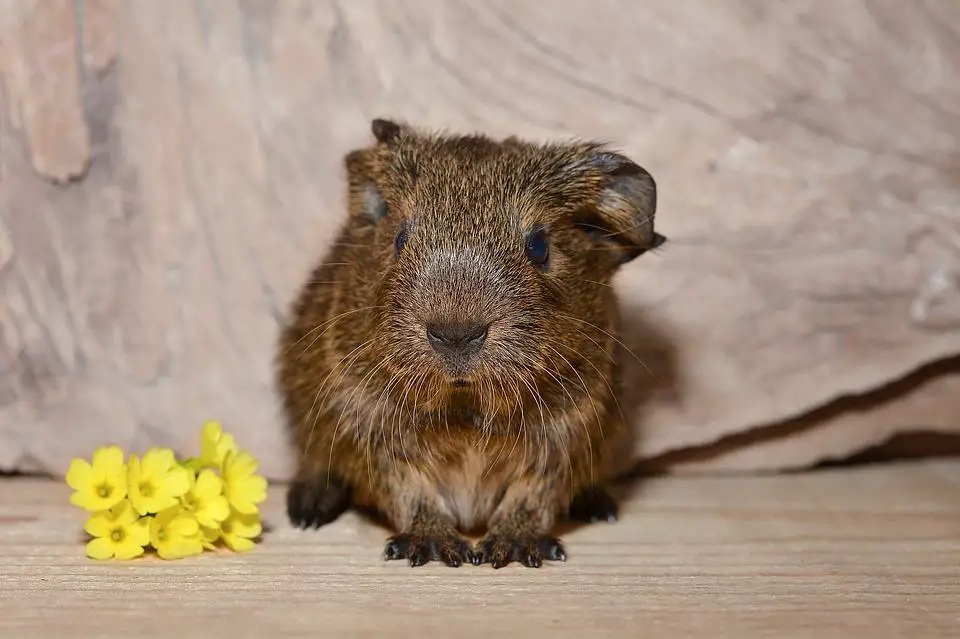
Okay, but how adorable is that? With the “pig” part in their name, you’d think a baby guinea pig would be named a piglet, but no! They have the same name as what we call a baby dog—a pup or a puppy!
2. They are born with fur and teeth
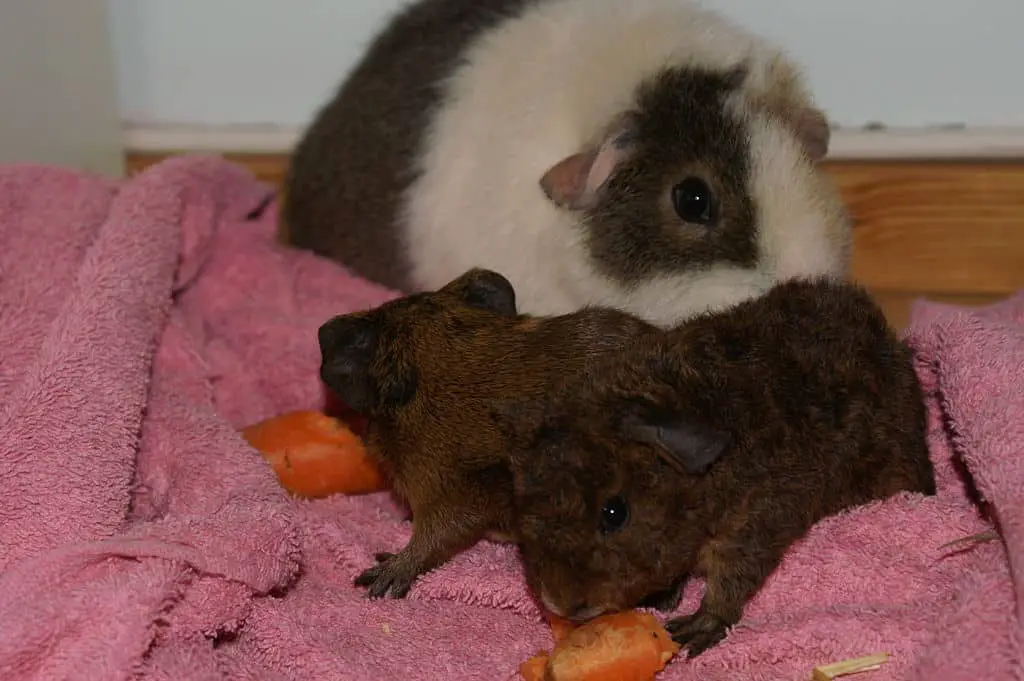
Unlike human babies, guinea pig pups are born with teeth. This is because they start eating solid food not too long after their birth. Another special feature is that they are born with fur, unlike many furry animals who are born with bare skin and start growing fur only after their birth. Because they are born with fur, you can immediately see the color and pattern that your baby cavy will have!
3. They are born with their eyes open
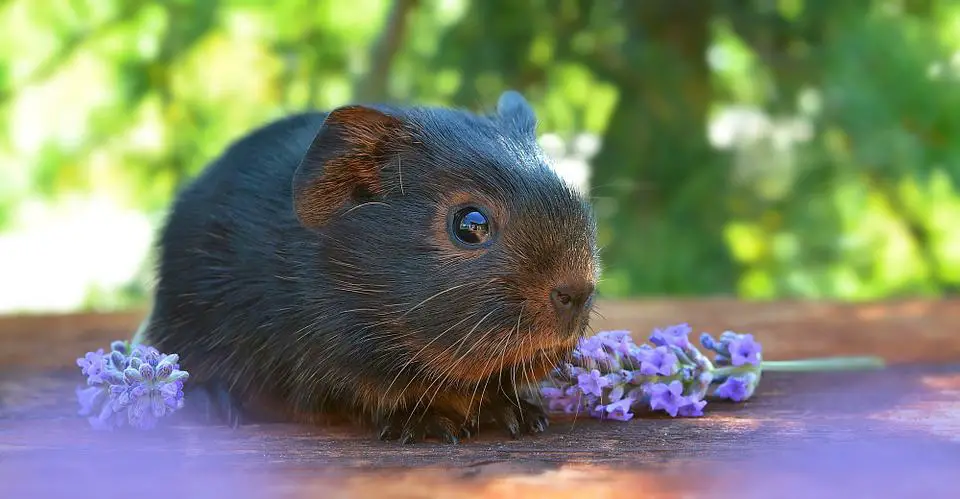
A cool similarity guinea pig pups have with human babies is that they are born with their eyes open, unlike dogs and cats. This is due to them being prey animals and being able to be aware of their surroundings in case there is a threat to their life from predators.
4. They can run when they are only a few hours old and often get the “zoomies”
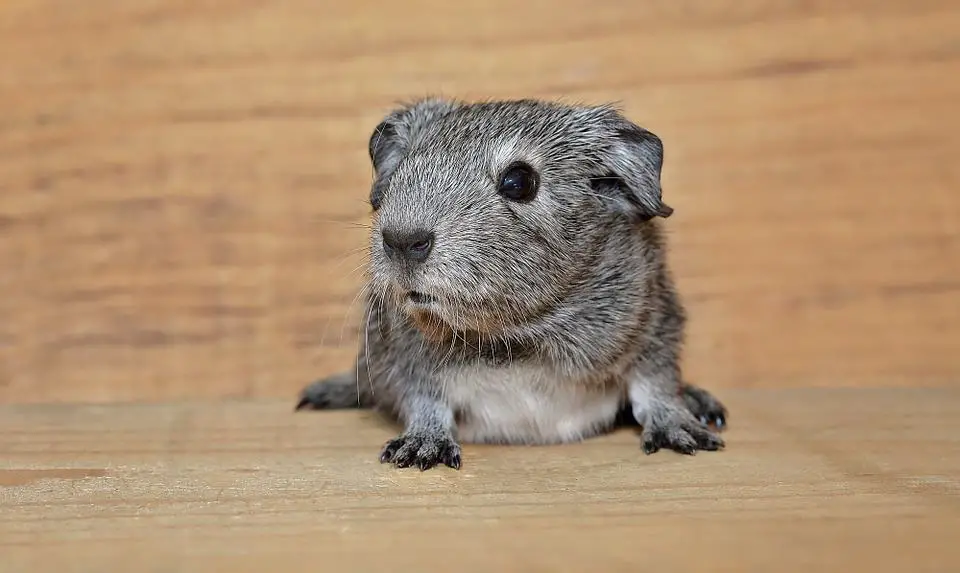
Yes, guinea pig babies are able to run about 3 hours after they are born. This is also a defense tool given to them by nature so they can run and hide in case their life is in danger.
5. Guinea pigs give birth to 3 to 4 pups on average but can have 8 at a time
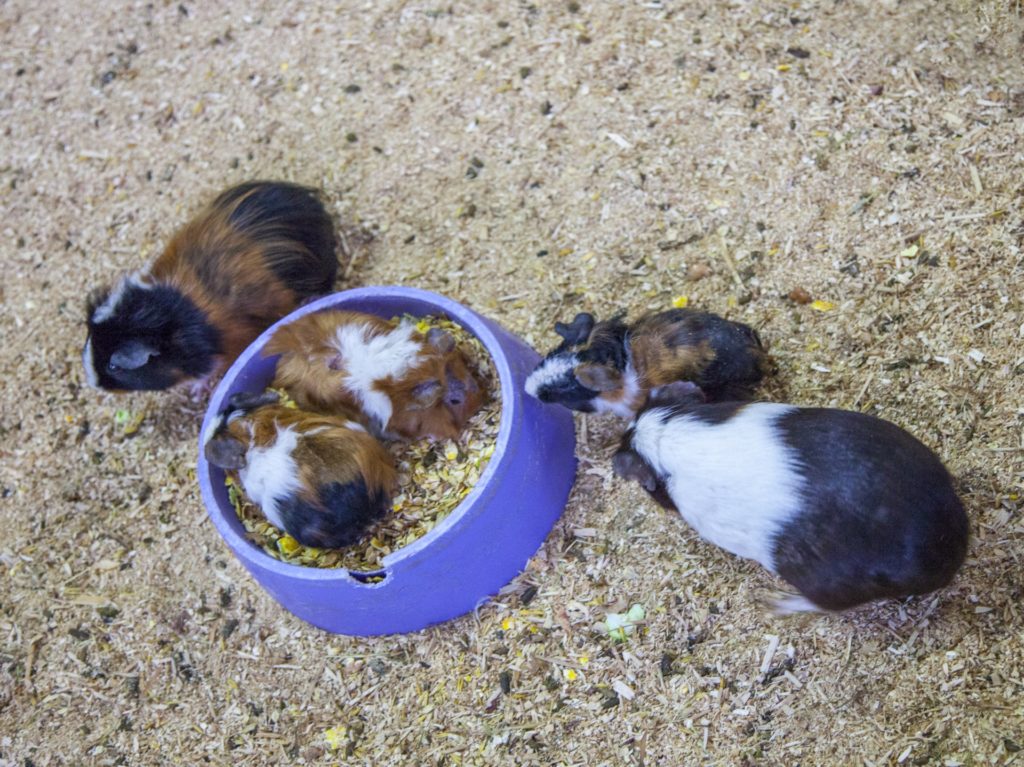
With a gestation period of 59-72 days, a guinea pig mom usually gives birth to about 3 to 4 healthy pups at a time. A guinea pig litter can also have up to 13 pups at a time, but there can be low birth weight problems with some pups when the number is high.
6. Mama guinea pig can have up to 5 litters a year
A female guinea pig can get pregnant when they are as young as 8 weeks, but it can be unhealthy for them to be pregnant before they are at least 3 months old. They can give birth to an average of 5 litters a year. This can vary from 2 to 8.
7. Mama guinea pigs are extremely protective of their babies
Just like all mamas, guinea pigs mothers are highly protective of the pups, especially during the first few days of their lives. They spend a lot of time nursing, cleaning, bonding, and providing warmth for their new pups. They quickly start teaching basic survival skills to the pups since they grow up quite fast.
8. Guinea pig babies snack on nutritious poop
It does sound really icky, but during the first days of their life, you might see guinea pig moms produce feces for the pups to chew on. Interestingly, while what they eat may look like poop, they are a special type of pellets they defecate called cecotropes. They are packed with nutrients and minerals that increase the immune and digestive functions of the pups.
9. They eat solids after 3 days
Guinea pig moms teach the pups to eat solid foods as early as two or three days after they are born. During the first few weeks, mother guinea pigs nurse the pups while they also nibble on fresh solid foods. Eventually, they transition to only eating solid foods.
10. They have lots of bones for a tiny creature—258, in fact!
The body of a tiny guinea pig is rather complex and has 258 bones. (Humans have 270 bones, to compare!). If you are raising guinea pig pups, make sure you include plenty of nutrients to keep their bones healthy when you prepare their diets.
11. Their front paws have 4 toes, and 3 toes in their back paws.
Another interesting fact that you may have missed about guinea pigs, especially if you own a long-haired variety, is the different number of toes in their feet. A guinea pig baby is born with 4 toes on its front paws, and 3 in its back. There are also guinea pigs that shoe polydactyly, which means they have more toes than the usual number on their paws.
12. You will know when a baby guinea pig is excited (or hungry!) when they “wheek”
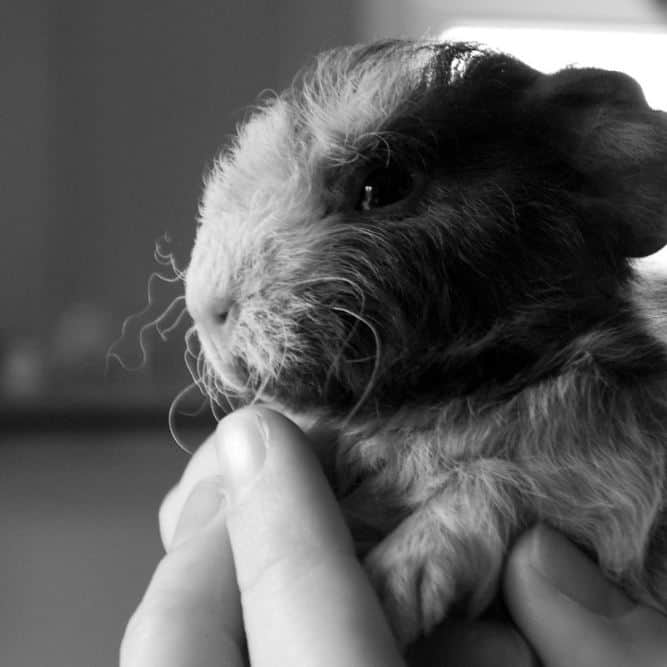
We all know that guinea pigs grow up to be very chatty and mischievous. They aren’t too different as babies either. There are eleven different call types or sounds that guinea pigs make when they want to communicate. As babies, it is mostly to show when they are hungry, excited, or in need of some sort of distress. This is called “wheeking” because that is exactly what it sounds like.
13. They learn basic grooming and life skills from their moms during the first month
All kinds of cavies are generally rather clean animals. Sure, they can mess up their habitat when they are too excited, but they spend a lot of effort to keep themselves clean. Guinea pig mamas teach the pups these basic grooming habits early on in their life. They lick their fur to clean and often stand on their hind legs to better reach their sides and front, which is a very cute thing to see.
14. Guinea pig babies should not be touched or held by anyone for at least a week
Unless it is absolutely necessary, such as to save them from immediate danger, you should not touch guinea pig pups in the first week of their lives. When you touch the pups at this special time right after their birth, it can disrupt the bonding process they have with their mothers.
15. A baby guinea pig easily fits the palm of your hand
A newborn guinea pig pug is usually about 3-6 inches long. If the litter is large, the size of each pup tends to be small. After a week, you can carefully handle them if needed. Be extremely gentle with them. Always place them on your palm supporting their tummy and the behind. You cannot hold them as you would hold kittens or puppies.
16. Boy guinea pigs are called “boars” and are troublemakers
A male guinea pig is called a “boar”. Once a guinea pig mother gives birth to a litter, you need to identify male and female pups and separate the males from the mother after about a month. Guinea pig fathers should also be separated from the pups after birth since they can be aggressive towards the male pups.
17. They become grown-ups after just 6 months
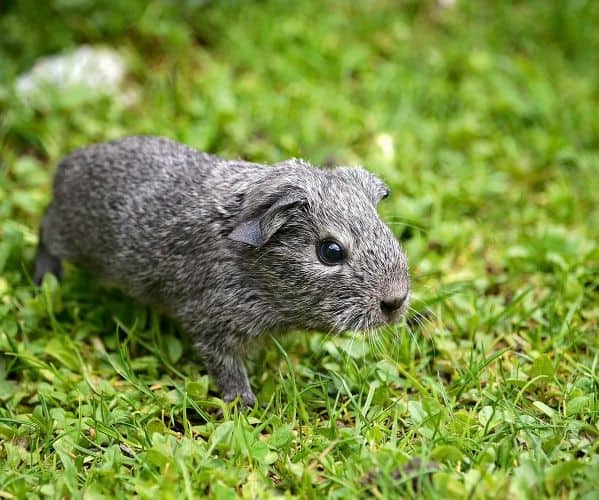
Guinea pig moms do not have to deal with the moody teenage years of their offspring like human moms do, because the pups grow up to be functioning adults by the time they are just 6 months old. Starting from about 3 inches long, they double their size and become about 6-8 inches long in 8 weeks. By the time they are 6 months old, they will be full-sized and independent.
18. They love lots of toys and space to play
Guinea pig pups have a lot of energy and they need plenty of stimulation to keep themselves entertained during their growth bursts. Therefore, they need a spacious habitat with simple toys that will keep both their bodies and minds occupied. Chew toys are a must for growing guinea pig pups to help keep their teeth and jaws strong. Tunnels and hideouts are also great toy options for growing guinea pig pups. Make sure the toys are made of materials such as wood that are not toxic if ingested.
19. Guinea Pig pups “popcorn” often when they are happy and content
Popcorning is a funny and adorable behavior shown by guinea pig pups when they are happy. It is not too different to us jumping up and down with joy. Popcorning involves the pups doing quick little jumps, similar to when popcorns are popped when we make them. These often happen in the middle of their runs, accompanied by happy little squeaks. It is such a joy to behold!
20. Introduce yourself to the guinea pig babies early
After the first week that they bond with their mothers and learn about the ways of the world, you can introduce yourself to them. Hand feeding is a great way for you to bond with the guinea pig pups. Hold some treats or hay and stay still when they come to feed. Allow a sense of trust to be developed naturally.
The earlier you can make yourself familiar to them as a safe and comforting presence is better. The natural instinct of guinea pigs is to run and hide from you. Therefore, you need to be a regular comforting appearance in their life so they learn that you are not to be feared.
Final words
There you have it, the top 20 facts about baby guinea pigs. In their fully-grown form guinea pigs are already among the most adorable creatures on the planet, but as babies, they take that cuteness to a whole new level! I hope you learned something new, which was your favorite fact?
There are a lot of images of baby guinea pigs on this page, but the best way to experience these adorable little creatures is through video. Check out this YouTube video of 2 little piggies growing up!
- How Long Do American Eskimo Dogs Live? Important Factors and Care Tips - September 29, 2023
- Do American Bulldogs Need Grooming? Essential Tips and Care Guidelines - September 29, 2023
- Do Bengal Cats Enjoy Playing? Essential Tips for Keeping Them Active - September 29, 2023